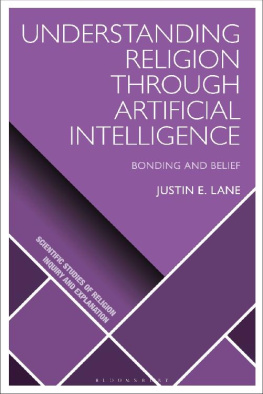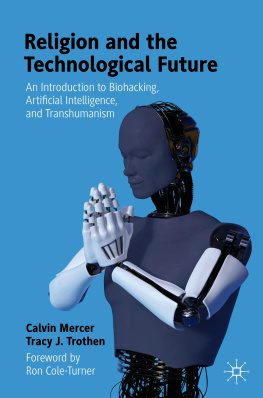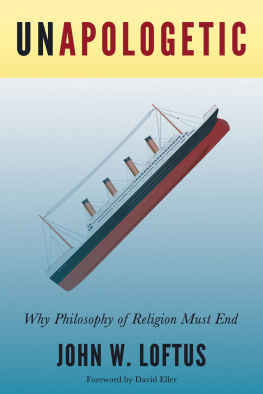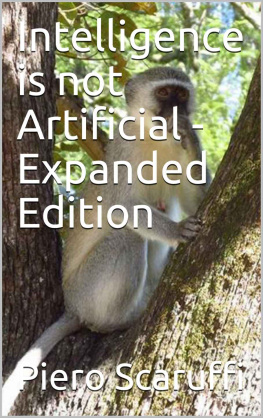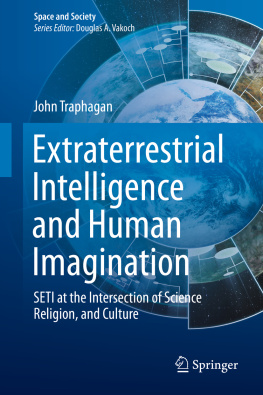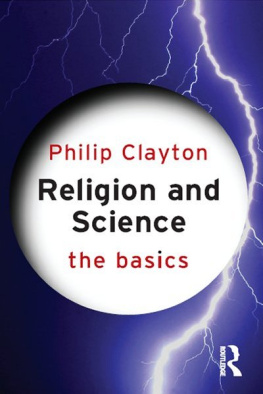Understanding Religion through Artificial Intelligence
Scientific Studies of Religion: Inquiry and Explanation
Series editors: Luther H. Martin, Donald Wiebe, William W. McCorkle Jr., D. Jason Slone, and Radek Kundt
Scientific Studies of Religion: Inquiry and Explanation publishes cutting-edge research in the new and growing field of scientific studies in religion. Its aim is to publish empirical, experimental, historical, and ethnographic research on religious thought, behavior, and institutional structures. The series works with a broad notion of scientific that includes innovative work on understanding religion(s), both past and present. With an emphasis on the cognitive science of religion, the series includes complementary approaches to the study of religion, such as psychology and computer modeling of religious data. Titles seek to provide explanatory accounts for the religious behaviors under review, both past and present.
The Attraction of Religion , edited by D. Jason Slone and James A. Van Slyke
The Cognitive Science of Religion , edited by D. Jason Slone and William W. McCorkle Jr.
Contemporary Evolutionary Theories of Culture and the Study of Religion , Radek Kundt
Death Anxiety and Religious Belief , Jonathan Jong and Jamin Halberstadt
The Impact of Ritual on Child Cognition , Veronika Rybanska
Language, Cognition, and Biblical Exegesis , edited by Ronit Nikolsky, Istvan Czachesz, Frederick S. Tappenden & Tamas Biro
The Learned Practice of Religion in the Modern University , Donald Wiebe
The Mind of Mithraists , Luther H. Martin
Naturalism and Protectionism in the Study of Religions, Juraj Franek
New Patterns for Comparative Religion , William E. Paden
Philosophical Foundations of the Cognitive Science of Religion , Robert N. McCauley with E. Thomas Lawson
Religion Explained?, edited by Luther H. Martin and Donald Wiebe
Religion in Science Fiction, Steven Hrotic
Religious Evolution and the Axial Age , Stephen K. Sanderson
The Roman Mithras Cult , Olympia Panagiotidou with Roger Beck
Solving the Evolutionary Puzzle of Human Cooperation , Glenn Barenthin
Understanding Religion through Artificial Intelligence
Bonding and Belief
Justin E. Lane

Contents
Figures
An example of a simple artificial neural network |
Proposed relationships of the IIS |
Network-based representation of a personal schema |
Visual depiction of schemas with conceptual ties |
An example of a semantic network map constructed from a participants semi-structured interview during the initial pilot study |
Results of SEM |
Motivation plot for typical run of the model presented in Whitehouse et al. (2012) |
Run of IIS model with similar settings to Whitehouse et al. (2012) |
A conversion to a new religious movement within the simulation |
Visualized output of the Rescorla-Wagner model |
Results from analyzing the strength and frequency of key terms drawn from sermons in a census region |
A depiction of how the IIS explains some social schisms |
Tables
Variables and Settings for DMR1 Model as Published by Whitehouse et al. (2012b) |
Settings for DMR1 Parameter Sweep Experiment |
Parameter Settings for DMR1 Replication |
Means for Social Identity by Group Size |
Get set for an invigorating ride to the frontiers of the cognitive science of religion by a scholar who is not afraid to seek new pathways in unexplored territory and who is even willing to point to new places to build striking abodes. The role of intrepid explorer fits Justin Lane well. He has already accumulated an impressive number of publications on subjects of intense interest, for example, predicting religious extremism, explaining the conditions of religious violence, the role that anxiety plays in religious behavior, modeling terror management theory, identify fusion, and semantic networks. Need I go on?
Those of you who read the Foreword before turning to the Introduction or, if you are in a hurry, Chapter 1, most probably do so because you want to taste the flavor of the book before you are ready to delve into its contents. Be ready, then, to be surprised because Lane wants you to face up to science at its most adventurous when dealing with puzzling but important phenomena, namely religious thought and behavior.
All scientific investigation involves employing theoretical spectacles to bring obscure data into focus. Lane is willing to show us what the magic of artificial intelligence (AI) can bring to light in very unexpected ways. So here we have before us Understanding Religion through Artificial Intelligence: Bonding and Belief . If both the pope and Elon Musk signal both the possibilities and dangers of the work that algorithms on big data can accomplish, then it is surely worthwhile to give an expert in AI a hearing as he shows you what new knowledge can be gained by modeling various forms of religiosity and also warning us of what ethical dangers lurk when data mining is employed for bad ends. Many people will indeed be surprised that AI can not only predict patterns of religious extremism but write convincing sermons!
It is not as if cognitive scientists had not already turned their attention to religion as a subject worthy of investigation. The move from interpretation to explanation had already begun to gather steam in the last decade of the twentieth century with a number of groundbreaking works such as Dan Sperbers Rethinking Symbolism, Stewart Guthries Faces in the Clouds, Lawson and McCauleys Rethinking Religion: Connecting Religion and Culture, Pascal Boyers The Naturalness of Religious Ideas, and Harvey Whitehouses Modes of Religiosity. These works had begun to attract the attention of a new generation of students in psychology, anthropology, philosophy, religious studies, history, and even evolutionary biology who were eager to participate in the cognitive revolution. They brought with them not only a profound interest in theoretical and methodological issues that connected cognition and culture but a conviction that empirical and experimental studies were next on the docket. Religion Explained? The Cognitive Science of Religion After Twenty-Five Years tells an important part of the story of the development of the cognitive science of religion when scholars from various disciplines decided to work together by leaning and speaking the same language that had emerged. But science is always a work in progress, its discoveries always provisional. There is always more to learn, more to discover, new methods to apply. Justin Lane brings to this quickly developing field, or dare we say discipline of inquiry, the tools of artificial intelligence. In reading this work you will learn how the practitioners of AI go about figuring out what is happening when people engage in attention-grabbing forms of behavior. You will also discover what kinds of behavior will emerge when certain conditions prevail, for example, extreme forms of religious violence. You will also find out why simulating certain processes provides a means of understanding instances such as identity fusion and bonding.
The overall project that has captured Lanes attention is how computational modeling can provide us with a deeper understanding of how groups maintain social cohesion. This is a serious issue that is relevant for political scientists and their influence on makers of policy, sociologists and their concern for constructive and destructive social arrangements, psychologists and their concern for issues of identity, historians and their focus on group conflict and peaceful resolutions. It is also of interest to the general public in times of peace and strife.
Next page
